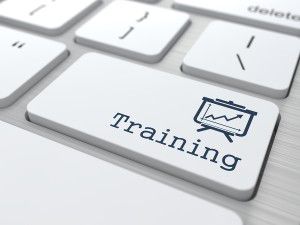How to Ensure That Sales Training Pays Off

It’s common practice for sales organizations to earmark significant budget dollars for sales training. It’s an ongoing operating expense, and a necessity for a healthy company. But in order for a training program to be effective over the long term, it needs to be thoughtfully and carefully planned from the outset. In other words, it should not be a series of one-off, semiannual training sessions, each one a déjà vu—haven’t we done this before and had mediocre results from it? Nor should it be the case that sales reps temporarily adopt best practices from the training, only to eventually slip back into old habits. A profound, sustainable shift should be the goal when it comes to sales training.
First, Understand the Skeptics
Start from the realistic standpoint that there may be certain barriers to effective training. Skepticism is likely the chief culprit. A company’s sales-training history can often be the very cause of that skepticism, because over the years the training might not have stuck. The result is that some members of your workforce will equate training with wasted time and energy.
Past sales training efforts might not have been carried through in a meaningful and productive way. But that’s a perception issue as much as anything. Leadership might view the training as cut-and-dried: You hold the training sessions and from that point forward you’ve set in motion a profound change in the way the sales team works. However, when that’s not the case, those same individuals usually fault the training. But they are false in their assumption. And the cumulative effect of all the non-starter training is in part what leads to the skepticism in the first place. Because if history tells you from the outset that something won’t work, it probably won’t.
Training That Revolutionizes
Effective sales training is never built on the premise of passive transformation. The best training is effective because it requires active participation on an ongoing basis. Develop a sales training strategy that can be worked into your organization’s daily operations. The best-practice sales methods you teach in training sessions need to become the new normal, not just nice-to-have supplements to the old ways of doing things.
It comes down to integration. Jettison the outmoded idea that sales training is something separate from the sales function. Take a holistic approach to the training, working it into the culture so that it influences behaviors and work habits, resulting in sales training that changes behavior long-term and creates a legacy of positive change.
Communicate the Big Picture
Organizations benefit from clearly communicating training goals and objectives at all rungs on the corporate ladder. Team members—from the C-suite to marketers to new sales recruits—need to understand, be in agreement about, and be in alignment with clearly stated goals and training outcomes. This can happen only after the above barriers to change have been broken down—the skeptics don’t have to become cheerleaders, exactly, but they need to be fully onboard!
To ensure that your sales training strategy is strong, create a solid structure to facilitate it. Keep the following in mind:
- Don’t apply an off-the-shelf training solution without custom fitting it to work within the context of your organization.
- Choose individuals who have the talent to be effective trainers. They’ll need to have the relevant sales experience behind them, and the passion to inspire others to be the best at what they do. As coaches, they’ll need to be engaging and captivating—the kind of folks other people want to listen to.
- Perpetuate the training outcomes over time by involving the executive team, the management team, and your team of sales reps in the transformation; make sure everyone feels a sense of investment in the training.
- Ensure that your skilled and talented sales coaches have a thorough understanding of the training curriculum, and that they will actively and creatively reinforce it over time.
- Support positive training outcomes through engaging methods such as role playing and gamification. This will ensure that the skills and best practices from the training are enthusiastically integrated into the culture.
- Use team meetings, coaching sessions, and one-on-ones as opportunities for applying training best practices to real-world scenarios. Moving from the hypothetical to the practical is a way to ensure that members of your organization are synchronized around messaging and are applying their new skills effectively, in ways that positively impact the bottom line.
By creating a solid training strategy, and then incorporating it as an everyday function of doing business, you’re sustaining not only the best practices that work on an individual-contributor basis, but investing in the future growth of your organization. Sales training is a necessity that should never be viewed as a necessary evil. Instead, embrace it as a positive. You don’t want runaway training. You want training you can run with.

- Account Planning (16)
- Awards (42)
- Client Testimonial (37)
- Personal Branding (21)
- Podcast (12)
- Research (77)
- Sales Career Development (90)
- Sales Coaching (164)
- Sales Consulting (141)
- Sales Culture (181)
- Sales Enablement (380)
- Sales Leadership (111)
- Sales Management (267)
- Sales Negotiation (11)
- Sales Prospecting (136)
- Sales Role-Playing (19)
- Sales Training (242)
- Selling Strategies (279)
- Soft Skills (78)
- Talent Management (101)
- Trusted Advisor (29)
- Virtual Selling (57)
- Webinar (13)




























